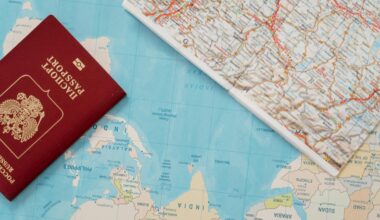Australia offers some of the most sought-after immigration opportunities in the world. For families looking to reunite or build a future together, the Australia Family Visa is a critical pathway. Whether you want to join your spouse, parents, children, or other close relatives, this visa allows eligible family members to live, work, and enjoy life in one of the world’s most vibrant and welcoming countries. The process may seem complex, but the correct information and guidance can open doors to new opportunities and a bright future for your family.
In this guide, we’ll explain the essential details of the Australia Family Visa, including the available types and the steps involved. Whether navigating the application process for the first time or needing help understanding eligibility requirements, we’re here to help you better understand how to bring your loved ones closer and start your new life in Australia.
What is an Australia Family Visa?
The Australia Family Visa is designed to help families reunite and live together in one of the world’s most sought-after destinations. This visa category allows Australian citizens, permanent residents, or eligible New Zealand citizens to sponsor their family members, enabling them to live, work, and study in Australia. The family visa system is integral to Australia’s immigration policy, focusing on family reunification and providing pathways to permanent residency. These visas create a bridge for families who want to build a future together in a country that offers abundant opportunities.
Advertisements
The Australia Family Visa promotes long-term social stability by helping families remain united. Whether you’re seeking to join a spouse, parent, child, or other close relatives, this visa category serves as a pathway to bring loved ones together and offer them a chance to thrive in Australia.
Why Consider a Family Visa for Australia?
For many, applying for an Australian family Visa is a life-changing decision. The visa brings families together and offers a host of benefits that make a living in Australia a rewarding experience. Here are some reasons why many immigrants consider applying for a family visa.
Reunite with Loved Ones
The primary reason many people apply for a family visa is the opportunity to reunite with loved ones. Australia offers a variety of family visas that allow you to bring a spouse, child, parent, or other close family members to live with you. For families separated by distance or life circumstances, this visa provides a chance to create a home together in Australia, where everyone can enjoy the quality of life and opportunities the country offers.
Advertisements
Access Permanent Residency
One of the most significant benefits of the Australia Family Visa is the potential for permanent residency. Many family visas are pathways to permanent residency in Australia, which means that once granted, your family members may have the chance to live, work, and study in the country indefinitely. Permanent residency also opens up opportunities for citizenship, giving your family access to various benefits, such as healthcare, social security, and education.
Enjoy the Australian Lifestyle
Australia is known for its high quality of life, stunning natural beauty, and vibrant cities. From pristine beaches to bustling cultural hubs, the country offers a lifestyle that many immigrants dream of. By securing a family visa, your loved ones will be reunited with you and gain access to a diverse, inclusive society and an excellent standard of living, including healthcare and education systems that are among the best in the world.
Broader Opportunities for Families
An Australian Family Visa isn’t just about reuniting with loved ones—it also opens doors for the entire family. Children can benefit from world-class education, spouses and partners can pursue job opportunities, and family members can access healthcare services essential for their well-being. This comprehensive support system can provide a strong foundation for success and happiness in your new life in Australia.
Types of Family Visas in Australia
Australia’s immigration system offers several types of family visas to cater to different family relationships. Each visa type has its eligibility requirements and benefits, but they all share the goal of helping families live together in Australia.
Partner Visa
The Partner Visa is one of the most common family visas, designed for spouses or de facto partners. This visa is granted in two stages: the Subclass 820 (temporary) visa allows you to live in Australia while your permanent Subclass 801 (permanent) visa is processed. Similarly, Subclass 309 (temporary) and Subclass 100 (permanent) Partner Visas are available for applicants outside Australia at the time of application. This visa category is ideal for married couples or in a committed de facto relationship.
Parent Visa
The Parent Visa allows parents to join their children living in Australia. The Subclass 103 is a non-contributory parent visa, offering a more affordable option but with a much longer processing time. The Contributory Parent Visa Subclass 143, on the other hand, offers a faster processing time in exchange for higher application fees. Both visas provide a pathway for parents to live in Australia with their children.
Child Visa
The Child Visa allows parents to bring their children to Australia. This visa can be granted to biological, adopted, or stepchildren. The Subclass 101 is for children outside Australia, while the Subclass 802 is for children already in Australia. Both visas offer the opportunity for children to live, study, and access healthcare in Australia.
Remaining Relative Visa
For individuals with no other close family outside of Australia, the Remaining Relative Visa allows relatives to reunite with their Australian sponsor. The Subclass 115 visa applies to those outside Australia, while the Subclass 835 applies to those already in Australia. This visa is designed to help people who are the last surviving members of their immediate family.
Other Relevant Visa Options
In addition to the above, Australia offers a range of other family-related visas for dependent relatives, carers, and other close family members who require assistance or have strong ties to the applicant. These include the Dependent Relative Visa (Subclass 114) and Carer Visa (Subclass 116), which allow individuals who need help due to illness or disability to join their Australian-based family members.
Eligibility Criteria for Family Visas
To qualify for an Australia Family Visa, applicants must meet specific eligibility criteria, including sponsorship requirements, proof of relationship, health and character assessments, and financial capacity.
Sponsorship Requirements
For a family member to apply for a family visa, they must have a sponsor who is an Australian citizen, permanent resident, or an eligible New Zealand citizen. The sponsor will provide financial support and ensure the applicant does not rely on government assistance during their stay in Australia.
Relationship Evidence
Applicants must provide evidence of their relationship when applying for a family visa, especially for partner and child visas. This might include marriage certificates, proof of cohabitation, photographs, joint bank accounts, or other documents showing the relationship’s genuineness. The stronger the evidence, the better the chances of approval.
Health and Character Requirements
All applicants must undergo a health examination and provide police clearances to meet Australia’s health and character requirements. These checks ensure that applicants are in good health and do not pose a risk to the Australian community.
Financial Capacity
Applicants may need to demonstrate financial capacity or provide evidence that the sponsor can support them financially. This ensures that the applicant will not require government assistance to live in Australia. Some applicants may also be required to show evidence of assets or income to satisfy this requirement.
Australia Family Visa Application Process
The application process for an Australia Family Visa can be intricate, but following these steps can increase your chances of success.
Determine Eligibility
Before applying, ensure you and your family meet all the eligibility criteria for the visa type you are applying for. You can check the Australian Department of Home Affairs website for specific visa requirements or seek professional advice to ensure your application is on track.
Gather Necessary Documentation
Gather all required documents, including identification, relationship evidence, health and character documents, and financial support proof. Ensuring that all documentation is complete and accurate will help avoid delays in processing.
Submit Your Application Online
Most family visa applications can be submitted online via the Department of Home Affairs website. It’s essential to fill out the forms carefully and provide all requested information.
Pay Application Fees
Each family visa application requires a fee, which can vary depending on the visa subclass. Check the current fee schedule and ensure payment is made before submission.
Attend Interviews (If Required)
In some cases, applicants may be required to attend an interview or provide additional information. Be prepared for this step and respond promptly to any requests for further documentation.
Await Visa Decision
Once you’ve submitted your application, you must wait for a decision. The processing time can vary depending on the visa subclass and the case’s complexity.
After Approval: Arrival and Integration
Once your family visa is approved, you and your family members can make plans for arrival in Australia. Take advantage of support services that help new arrivals integrate into Australian society, including language courses, settlement services, and local community networks.
Benefits of Family Visas in Australia
Obtaining a family visa for Australia has numerous benefits, making it an attractive option for many immigrants.
- Pathway to Permanent Residency
Family visas often serve as a pathway to permanent residency in Australia. This provides long-term security and access to various rights and benefits, including healthcare, education, and the opportunity to apply for Australian citizenship.
- Access to Healthcare and Education
As a family visa holder, your family members will gain access to Australia’s world-class healthcare system and educational opportunities. This ensures that everyone in your family has the support they need to thrive in their new environment.
- Rights to Work and Live in Australia
A family visa grants you and your loved ones the right to live and work in Australia, opening up employment opportunities and enabling you to contribute to Australian society.
- Social Security Benefits
Once granted a permanent visa, your family will also be eligible for social security benefits, including unemployment support, pensions, and assistance for low-income families.
Common Challenges and How to Overcome Them
While the Australia Family Visa process is designed to help families reunite, applicants often face challenges. Understanding these common obstacles and how to overcome them will increase your chances of success.
Proving Relationship Validity
For partner and child visas, proving the genuineness of your relationship can be challenging. Be thorough with your evidence and ensure it’s up-to-date and comprehensive.
Processing
Delays
Family visa applications can take time to process, especially for parent visas. Stay patient and keep track of any updates from the Department of Home Affairs.
Understanding Complex Criteria
Visa applications come with detailed requirements. Understanding these criteria is crucial; seeking professional advice may help avoid errors.
Financial Requirements
Meeting the financial capacity requirements can be a challenge. Be sure to provide unmistakable proof of your sponsor’s economic stability and keep records of all necessary documentation.
Family Visa Tips and Best Practices
Here are some best practices to follow for a smooth family visa application process:
- Understand Your Visa Options Thoroughly
Ensure you know the various visa subclasses and choose the one that best fits your situation. This ensures you apply for the proper visa from the start.
- Prepare Comprehensive Documentation
Gather all necessary documents early to avoid delays. This includes identity documents, proof of relationships, health checks, and more.
- Seek Professional Assistance When Needed
If unsure about the process, consider hiring an immigration lawyer to guide you through the application. A professional can help you avoid common mistakes.
- Monitor Application Timelines Regularly
Stay on top of your application’s progress by regularly checking the status and being proactive about any required actions.
Enhance Your Visa Application Success with Professional Assistance
While the family visa process can be overwhelming, having an experienced immigration professional by you can make all the difference. They can help you understand complex requirements, provide expert advice, and ensure your application is error-free. If you’re ready to begin your journey toward reuniting with your family in Australia, consider contacting an immigration attorney or advisor who can help you immediately.
Advertisements






